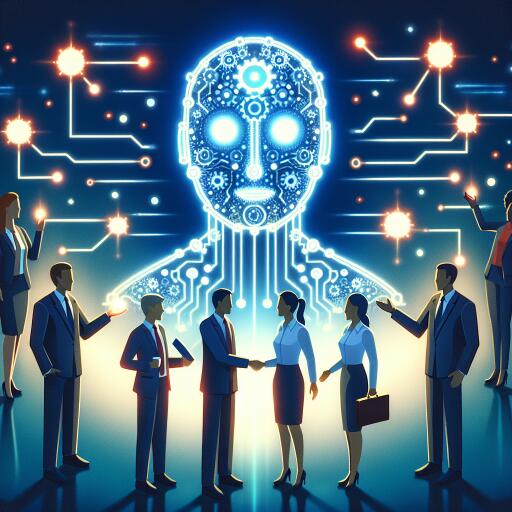CSP Leaders Unfazed by AI Job Disruption, Reveals Fierce Network Survey
In the ever-evolving landscape of the telecommunications industry, the integration of Artificial Intelligence (AI) and automation has sparked a mix of fear, anticipation, and optimism. The latest research from Fierce Network casts an illuminating light on this phenomenon, particularly focusing on the potential impact on employment within communication service providers (CSPs). This insight emerges from a detailed survey and report exploring the integration and implications of AI in the sector.
A common narrative across various industries is the looming specter of job displacement due to AI advancements. Notorious predictions have suggested a significant portion of current occupations could be automated within the next few decades. McKinsey’s forecast for automation of work activities by 2060 and IBM CEO Arvind Krishna’s commentary on back-office roles underline the growing apprehension. Moreover, sensational headlines, like the one from The Sun warning of a “job-pocalypse,” exacerbate these fears.
However, the sentiment among CSP leaders presents a starkly different picture. According to the Fierce Network Research’s survey, which included responses from 120 CSP executives in April and May, the future might not be as bleak as it seems. The findings indicate a robust optimism regarding the employment landscape in an AI-dominated era, with the majority of leaders anticipating job growth or, at the very least, minimal job displacement resulting from AI and automation integration.
Yet, amidst this optimism, a paradox emerges. Despite the positive outlook on jobs, CSP leaders also foresee a future where AI and automation could manage networks autonomously without human intervention. This expectancy gives rise to a compelling question: if AI systems can run the show, what roles will humans play?
The answer lies in the anticipated evolution of work. As AI takes over routine and repetitive tasks, the human workforce is expected to pivot towards roles that require oversight of AI systems, handling exceptions, and delving into complex problem-solving that AI cannot accomplish. Additionally, humans will likely be tasked with enhancing AI operations, ensuring cybersecurity, and pioneering new technologies and services. This reshaping of job responsibilities aligns with historical precedents where technological advancements have transformed, rather than eradicated, job sectors.
Examples abound, from the counterintuitive increase in bank tellers following the ATM’s invention to the evolving role of accounting post-spreadsheet innovation. While automation has indeed rendered certain jobs obsolete, new roles have emerged, often requiring higher-skilled labor.
Looking forward, the “Smart Cloud” concept encapsulates the fusion of cloud technology, observability, automation, AI, and security towards creating self-sustaining networks. This blueprint for fully automated, AI-driven network operations is poised to underpin a global economic transformation across various industries, from manufacturing to healthcare.
The necessity for human oversight amidst this automated future cannot be understated. As networks become increasingly central to global infrastructure, propelled by insatiable data demand, the human element in overseeing, improving, and innovating within these networks remains indispensable. The burgeoning network landscape, therefore, signals not a reduction but a redefinition of the workforce—an opportunity for growth in both the scope and sophistication of employment within the telecommunications sector and beyond.
In conclusion, the comprehensive research by Fierce Network Research challenges prevailing doom-and-gloom narratives surrounding AI and employment. By downloading the full report and tuning into the engaging webinar, industry professionals and observers alike can delve deeper into these findings, gaining a clearer perspective on the transformative potential of AI and automation within CSPs.
As we venture into this uncharted territory, one thing becomes clear: the future of work in telecommunications, influenced by AI’s ascendancy, may be different, but it is undeniably bright. The evolution towards more strategic and creative roles promises not only to sustain but to enrich the industry, heralding an era of unparalleled innovation and opportunity.










